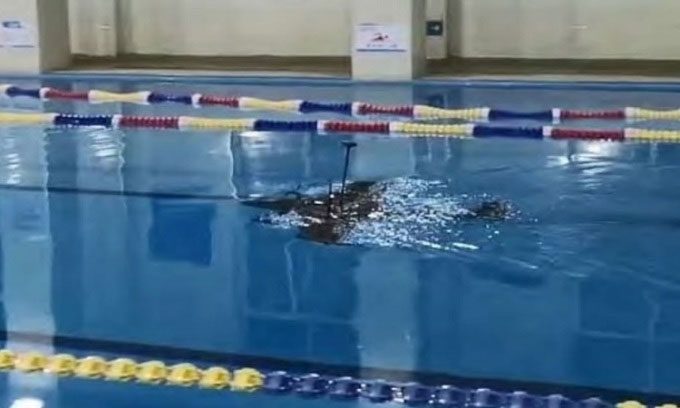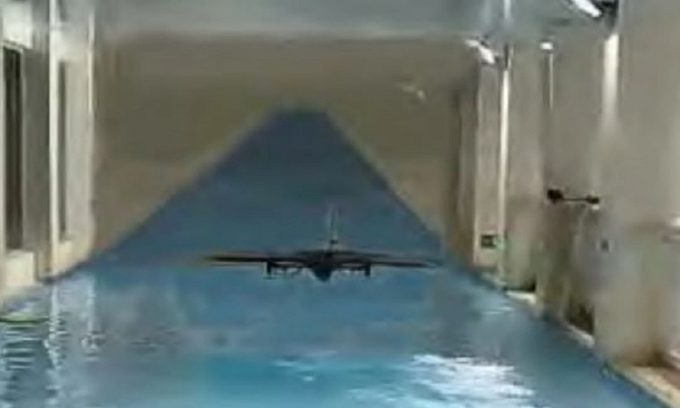A research team from Eastern China is developing and testing a type of submarine that can fly in the air at high speeds.

Prototype testing of the submarine on the water. (Photo: Nanning University of Aeronautics and Astronautics)
The unmanned vessel can conduct various civil and military operations such as underwater mine inspections, SCMP reported on August 8. Powered by four propulsion engines, including a pair at the front, the submarine can slowly approach underwater targets and linger in the area for a period of time. Two large wings that fold on the back of the vessel can unfold when the drone reaches the water surface, allowing it to fly at speeds of 120 km/h, which is about twice as fast as a conventional rotor-wing drone.
The submarine consumes very little energy when operating in fixed-wing mode, enabling it to carry out several long-range aerial missions, according to Professor Ang Haisong, the project leader at Nanning University of Aeronautics and Astronautics, in a study published in the journal Unmanned Systems Technology in June 2022.

The submarine consumes very little energy when operating in fixed-wing mode. (Photo: Nanning University of Aeronautics and Astronautics)
Ji Wanfeng, a professor at the Naval Aeronautics University in Yantai, Shandong, stated that this multifunctional submarine is one of the cheapest and most effective methods to incapacitate the defense systems on an aircraft carrier. The multi-layered defense systems of modern warships can shoot down about half of the approaching aircraft, missiles, or drones, according to estimates by Ji and colleagues. However, the multifunctional submarine can dive underwater when detected by radar and surface to avoid sonar.
A multifunctional submarine launched from a distance of 100 km has a nearly 100% survival rate if it can fly at speeds over 150 km/h, Ji’s team reported in a study published in the journal Electronics Optics & Control last month. This type of submarine can effectively target key enemy objectives.
The flying submarine developed by Ang’s research team features an airbag in its belly that can be filled with water to adjust buoyancy and maintain a certain depth without generating noise from the propulsion engines. When gliding in the water with its wings folded, its streamlined shape similar to a conventional submarine helps reduce drag and increase mobility. Ang and colleagues have built two small-scale prototypes with a wingspan of about two meters. According to them, the biggest challenge is if the submarine rises directly from the water’s surface, as the takeoff process is unstable due to surface waves and the simultaneous interaction of the submarine with air and water. To address this, they developed a complex control mechanism to allow the submarine to glide over the waves before taking off.


















































